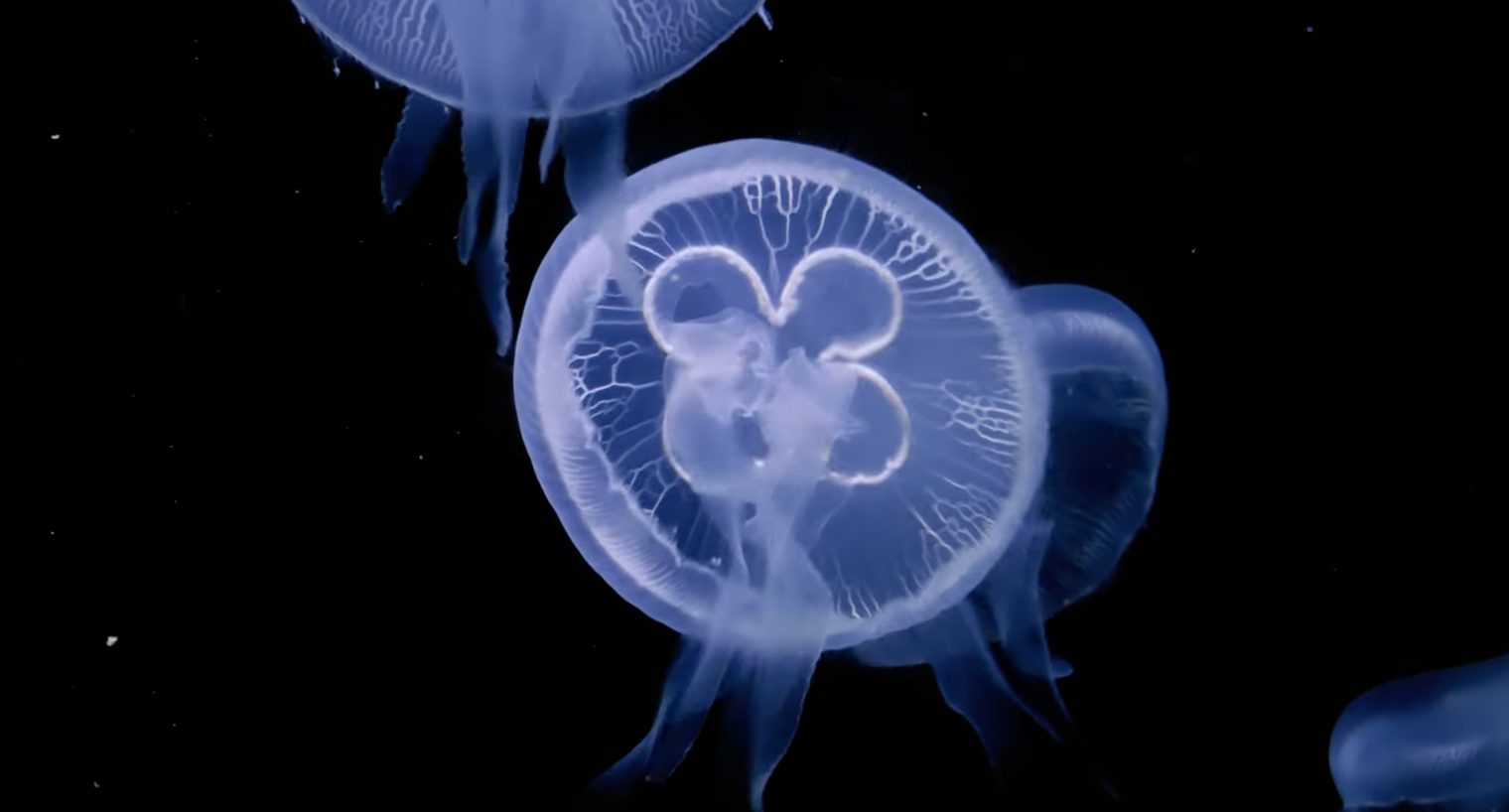Jellyfish are some of the most fascinating creatures in our oceans. Not only are they mesmerizing to watch as they drift gracefully through the water, but they are also ancient survivors, having been around for over 500 million years [1]. Their long history is a testament to their incredible adaptability and the wonders of evolution. In this blog post, we'll explore the unique biology of jellyfish, their evolutionary success, and the remarkable role they play in marine ecosystems today.
A Journey Through Time: The Evolution of Jellyfish
Jellyfish belong to the group Cnidaria, which also includes corals and sea anemones. [2] The evolutionary journey of these creatures dates back to the Cambrian Period, a time when life in the ocean was just beginning to diversify. Fossil evidence reveals that early jellyfish looked much like the ones we see today — with bell-shaped bodies and trailing tentacles [1].
What sets jellyfish apart from most animals is their simplicity. They lack a centralized brain, heart, and complex organ systems, relying instead on a basic nerve net to sense their surroundings and respond to stimuli. [3] This simplicity has actually been one of their greatest evolutionary strengths. By focusing on what’s essential, jellyfish have thrived in environments where more complex organisms might struggle.
Adapting to Thrive: How Jellyfish Have Survived for Millions of Years
Jellyfish have managed to survive for half a billion years by developing unique features that have helped them adapt to a wide range of marine environments. One of these adaptations is bioluminescence, the ability to produce light.[4] Some species of jellyfish can glow in the dark, using this ability for communication, camouflage, or to attract prey.

Another remarkable feature is their life cycle, which helps them maximize their survival chances. Jellyfish start their lives as tiny larvae called planula, which eventually settle on the ocean floor and develop into polyps.[1] These polyps can clone themselves, creating colonies of genetically identical individuals. When conditions are right, the polyps transform into the familiar jellyfish form — called medusa — and float freely in the ocean currents. This two-stage life cycle allows jellyfish to take advantage of both stable and shifting marine environments.

Surviving in Harsh Environments
Jellyfish are resilient creatures. They can tolerate changes in temperature, salinity, and oxygen levels better than many other marine animals. Some species have even adapted to survive in polluted waters. These traits make them well-suited to endure in the face of environmental changes like climate change and ocean pollution.
As global waters warm, jellyfish populations are booming in certain regions, creating what scientists call "blooms."[5] These sudden population surges can have dramatic effects on local ecosystems, sometimes disrupting fish populations and clogging power plant intakes.[6] While their adaptability can lead to such challenges, jellyfish remind us of the incredible ways nature adjusts to changes.

Jellyfish: Symbols of Resilience and Survival
Jellyfish are not just beautiful, they are survivors. Their ability to thrive in environments that range from coral reefs to deep, cold seas shows the resilience of life on Earth. Despite their simplicity, jellyfish have mastered survival, evolving strategies that have kept them around for hundreds of millions of years.[3]
So, the next time you see a jellyfish, whether in an aquarium or in the wild, take a moment to appreciate the sheer wonder of their existence. These creatures are living reminders of nature’s persistence and the incredible story of life’s adaptability.
Experience Jellyfish Up Close with Jellyfish Art
If you’re fascinated by jellyfish and want to experience these ancient creatures in your own home, Jellyfish Art offers stunning jellyfish aquariums and live pet jellyfish. Our aquariums are designed to showcase the elegance of jellyfish while providing them with the perfect environment to thrive.
Visit our website to learn more about how you can bring a piece of the ocean into your home
🔗 Jellyfish Art - Jellyfish cylinder tanks and live pet jellyfish
👉 Website: https://www.jellyfishart.com
📍 Location: https://maps.app.goo.gl/UDz1eQQii3yk7...
📞 Give us a call: 844-535-5900
Reference:
- Thompson, A. (2007, October 30). Oldest Known Jellyfish Fossils Found. Live Science. https://www.livescience.com/1971-oldest-jellyfish-fossils.html
- Sci-News Staff. (2018, December 4). Moon Jellyfish Genome Sequenced. Sci-News.com. https://www.sci.news/genetics/moon-jellyfish-genome-06690.html
- One Earth. (n.d.). Five jaw-dropping facts about jellyfish. Retrieved October 8, 2024, from https://www.oneearth.org/five-jaw-dropping-facts-about-jellyfish/
- Original Diving. (n.d.). Top Ten Jellyfish Facts. Retrieved October 8, 2024, from https://www.originaldiving.com/blog/top-ten-jellyfish-facts
- Geographical. (n.d.). Ocean blooms: tracking the rise of jellyfish swarms. Retrieved October 8, 2024, from https://geographical.co.uk/wildlife/ocean-blooms-tracking-the-rise-of-jellyfish-swarms
- Inhabitat. (2022, November 1). Jellyfish are taking over the oceans due to climate change. Retrieved October 8, 2024, from https://inhabitat.com/jellyfish-are-taking-over-the-oceans-due-to-climate-change/
Image Sources:
Jellyfish Cycle: https://www.freepik.com/premium-vector/jellyfish-life-cycle-stages_198558954.htm#fromView=keyword&page=1&position=7&uuid=33521fa5-fd42-4a50-b2c9-4657380ec85a
Anatomy of cnidarians | Britannica: https://images.app.goo.gl/VaG3kCdZpizZWbV86
Jellyfish swarm: https://images.app.goo.gl/rvAEzdmrtUFNrsCA7




